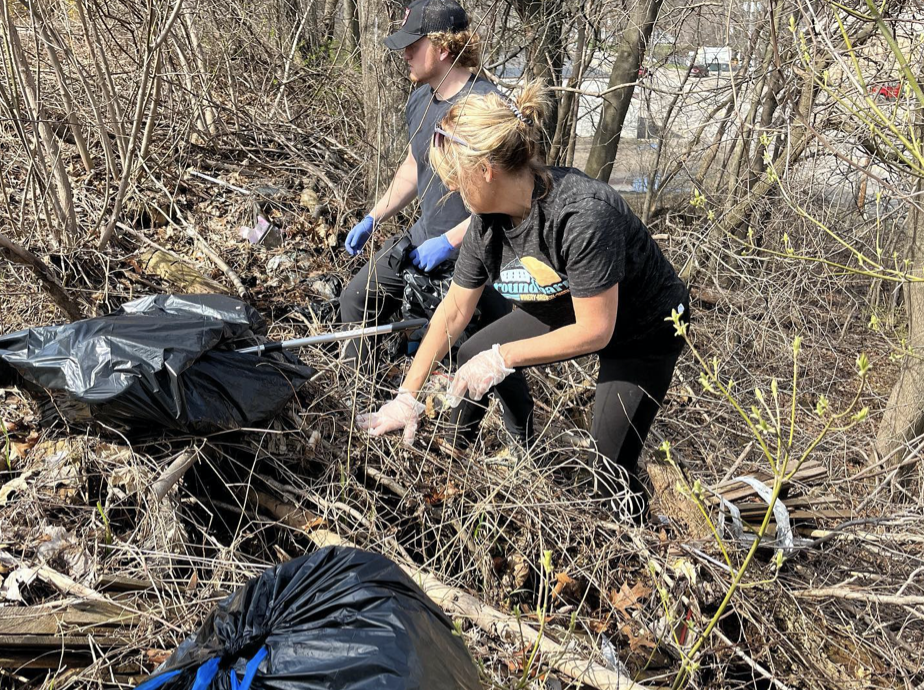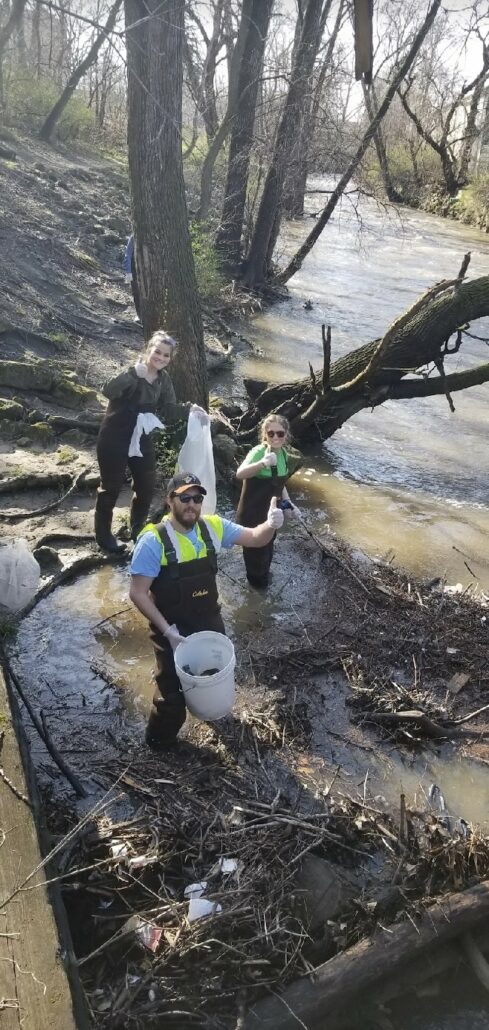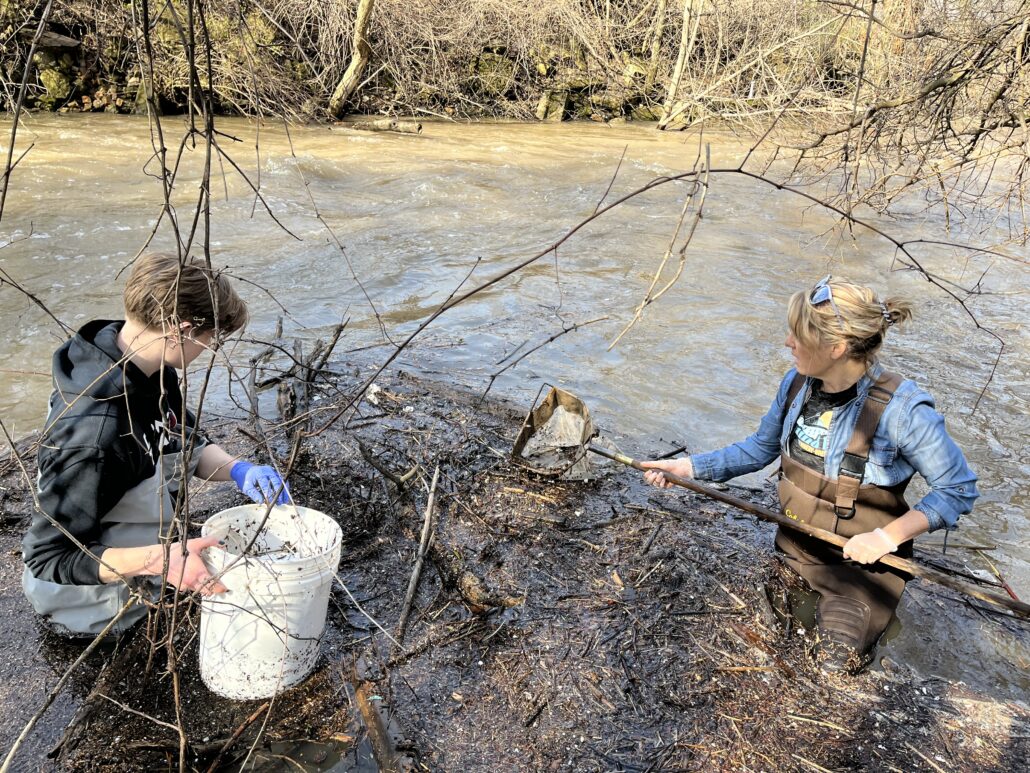By Anna Watson, WMEAC Water Fellow
Everyone is moving to the city…or at least that is how it feels. Urbanization is increasing and the number of individuals coming to Grand Rapids is escalating. This population growth is leading to a housing crisis, traffic issues, and an increase in trash. The waste issue is one that is dear to my heart, especially in regard to the impact pollution has on our Great Lakes and other surface waters. Considering this, I decided to coordinate a stream clean-up during my time at West Michigan Environmental Action Council (WMEAC).
When I heard that the Westside Community Clean-up would be happening in full-scale again this Spring on April 23rd, I thought it would be a great opportunity to collaborate with this cause. We focused our cleanup efforts on Roosevelt Park and Plaster Creek. Plaster Creek is one of the most contaminated streams in the Grand Rapids Area. The decline in the stream’s health began with the plaster industry when gypsum was found in the area and mining began. The gypsum was used to create plaster and much of the industrial waste ended up in Plaster Creek. The stream has become more polluted with the increase in urbanization. By the early 2000s, Plaster Creek had made its way to the top of West Michigan’s most polluted stream list, sitting at number one. It was often carrying bacterial loads so large that one could become sick from touching the water. The health of Plaster Creek is important due to the fact that it is a subwatershed of the Lower Grand River, which drains directly into Lake Michigan. For all of these reasons, I decided Plaster Creek would be a justified stream to focus on.

Over 614 individuals attended the clean-up, an increase in number from the year previous. Volunteers were spread throughout the Westside, from Richmond Park to Roosevelt Park. At Roosevelt Park, more than a dozen volunteers focused their efforts on cleaning up Plaster Creek. We covered roughly a 400-foot stretch of the stream, picking up carts full of trash and filling a 5-gallon bucket with sharp materials. While some volunteers walked the banks of the stream, others put on waders and got into the stream to pull garbage that had accumulated into piles in the stream itself. We pulled bottles, coats, masks, gloves, straws, cigarettes, and oh so much styrofoam from the stream. From the embankments near the stream, we gathered household trash bags full of garbage, clothing, shoes, and cleaning products. On these slopes were so many other large items that we could not collect safely such as mattresses and cinder blocks. These examples do not by any means complete the list of trash we were able to clean away from the watershed. As a result, we were able to clear small sections in the stream that had become a barrier to flowing water and discard any materials that would have been carried into the stream with future rain events. The combined effort from all sites ended in 4000 lbs of trash total that was picked up!
If you would like to help with the issue of waste in your community, you can first start with the “man in the mirror.” Decrease your waste consumption as best you can.
- Bring your reusable cup to Starbucks and reuse your bags at the grocery store.
- Think of your purchasing habits as casting your vote. Buy sustainable products, buy second-hand products, instead of buying new.
- Make sure you are recycling correctly! This is important. Know what products can be recycled in your community and know which specific plastic materials are recyclable at your local recycling facility. Not all plastic is recyclable in every city! Make sure that your recycling bins are clear of food waste or contamination. If there is food residue on your items they cannot be recycled, and your entire bin might then be disregarded and thrown into the landfill instead.
- Get involved in a clean-up effort. In addition to large clean-ups that happen once a year, find a group in your community that leads clean-ups often and find a day to participate! For those of you in the Grand Rapids area, look into GR Water Protectors who focus on streams, or block off September 10th, 2022 on your calendar for the Mayor’s Grand River Clean-up.

Banner image: Education program manager, Kyle Hart, and a volunteer cleaning Plaster Creek. Photo credit: Anna Watson.

